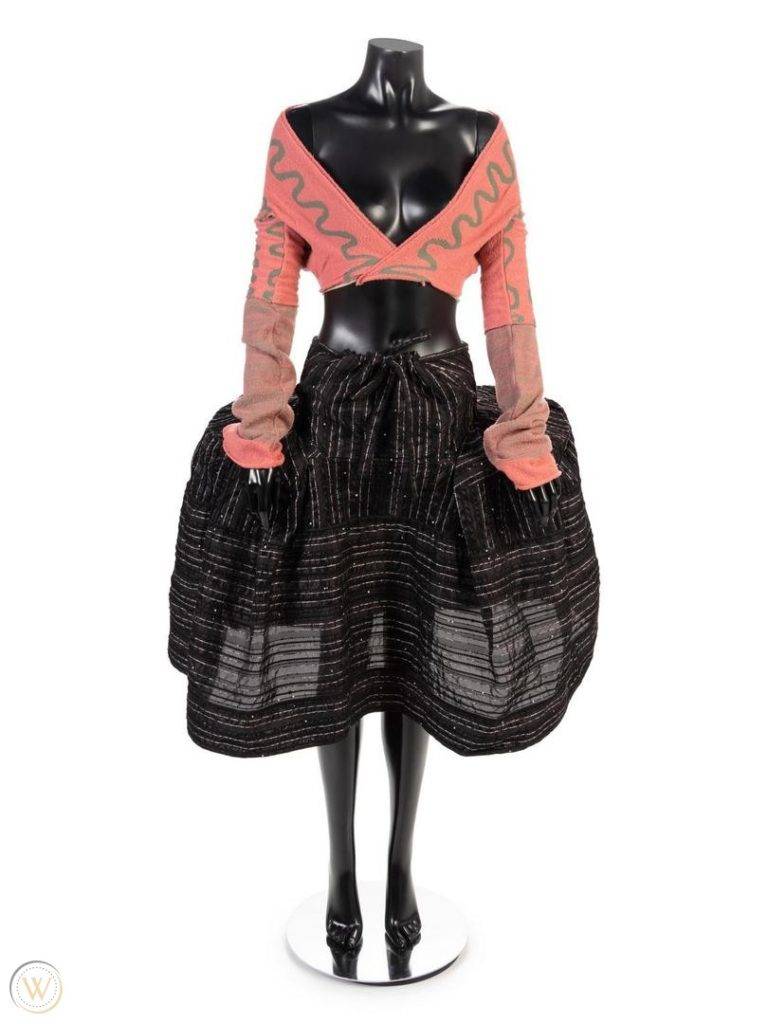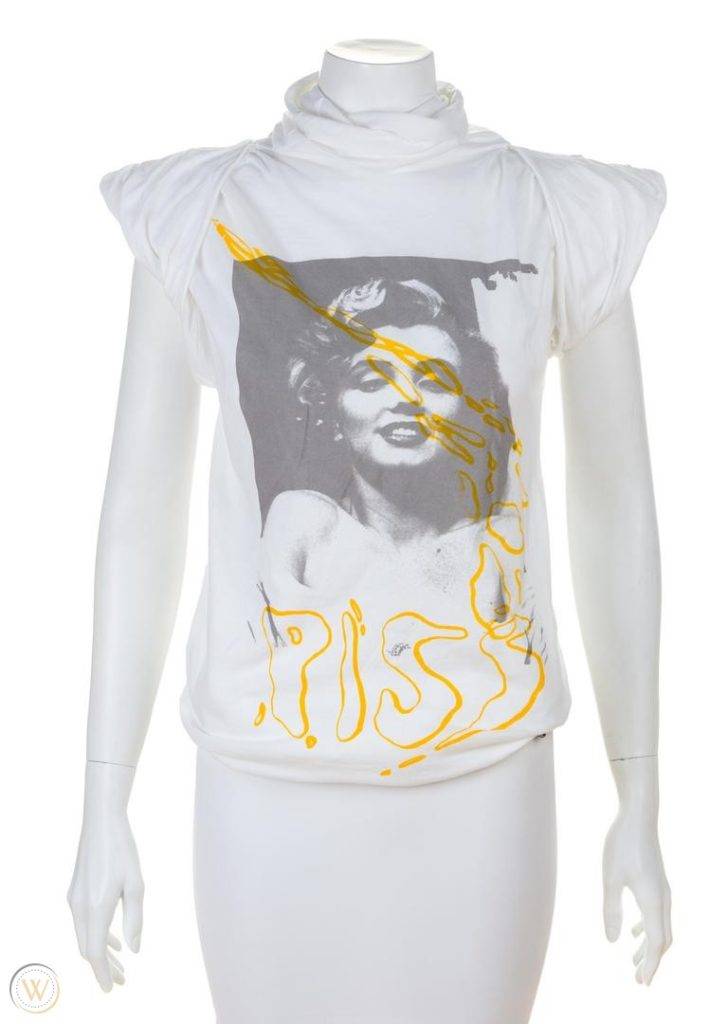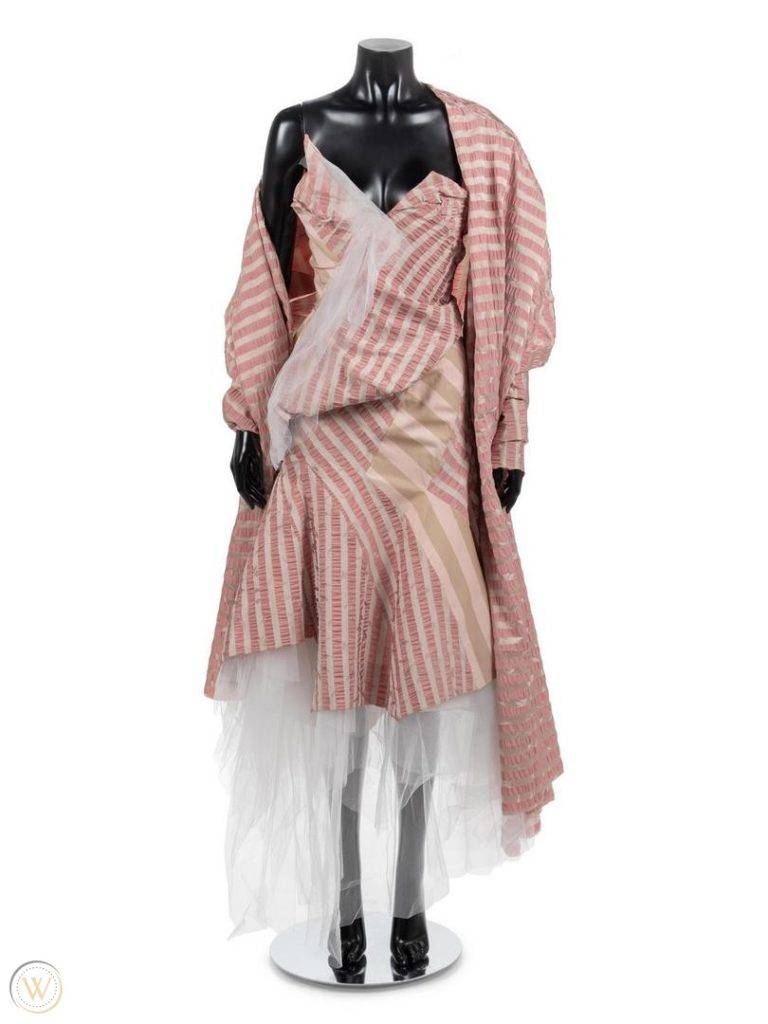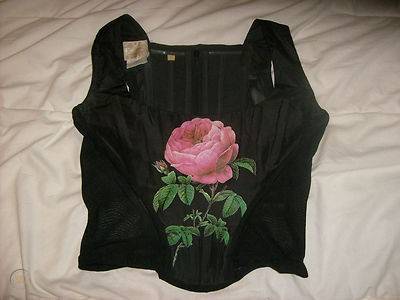Vivienne Westwood: Mother of Punk
“Our clothes tell stories and make people feel like characters. I think that gives people an extension to their personalities, and they start discovering things about themselves.” -Vivienne Westwood.

Eternal provocateur Vivienne Westwood is often credited as the “mother of punk,” though her origins are surprisingly subdued. Born Vivienne Swire in Derbyshire in 1941, the British iconoclast initially set out to become a teacher, marrying Derek Westwood in 1962 and settling into a quiet, quintessential suburban life. It was upon meeting music impresario Malcolm McClaren in 1965 that her world opened up, and Westwood began carving a space for her restless ideas to find material form.
Beginning with her collaboration with McClaren, Westwood’s clothes have maintained an air of freedom through a subversive mix of rebellion and historicism. A direct insult to puritanical notions of etiquette and morality, her designs often trade polite silhouettes for dramatic details borrowed from British history. A meticulous researcher, it is through her dissection of eighteenth-century aristocratic costume and portraiture that Westwood can mold her transgressive version of the liberated style. In her excavation and deconstruction of the past, Westwood has created some of contemporary fashion’s most innovative and iconic looks.
Dressed Viscous: The Punk Years
Though often cited as the sole architects of punk style, Westwood and McLaren’s collaboration was both a reaction to the social conditions of 1970s London and a fashion experiment. Begun as a youth movement to counteract the uniformed ideals of modernism, punk’s DIY attitude (literally) ripped the mod and hippie sensibilities of the 1960s apart at the seams. Westwood and Mclaren tapped into this sensibility, capturing and commodifying the emerging subculture in their original King’s Road boutique, opened in 1971. This early example of the contemporary concept shop served as an epicenter for punk’s artistic, musical, political, and sartorial expressions, with a revolving list of names on the door to reflect the shifting spirit on the street. The pair finally landed on “Seditionarie” in 1976, transforming the shop into an extension of McLaren’s musical project at the time, the Sex Pistols.

During her time with McLaren at Kings Road, Westwood was able to break from her conventional past and experiment with wild abandon. Many details that make up the punk archetype directly came from Westwood’s remixing of street style with retro and uniform clothing. Combat gear, motorcyclist leathers, and crisp 1950s “teddy boy” shirts were turned inside out, cut apart, and collaged back together (with a healthy dose of safety pins) to create a defiant and acerbic aesthetic- avant-garde gone trash. The silhouette was loose, disheveled, and purposefully distressed, often accompanied by challenging yet cheeky graphics; this sharp break from a more standard fashionable silhouette was perhaps the first time fashion had gone conceptual. While youth street style had originally established the punk look, it was Westwood’s use of irony and mix of references that made punk fashionable. Her interpretation embedded the aesthetic within popular culture in the forty-plus years since ‘Seditionaries,’ despite all its confrontation.
A New Romantic Way
Once the Sex Pistols disbanded and punk had infiltrated the zeitgeist, Westwood shifted focus from aggressively avant-garde collections to more subtle means of challenging the status quo. Rather than tear at the seams of her clothes, she shifted to reexamine history and tradition in a more considered approach to outsider aesthetics. Her first foray to the catwalk came in 1981 with her Pirates collection, inspired by an 18th-century engraving of a pirate. The collection was titled for Westwood’s “plundering” of history to create a 20th-century dandy or buccaneer. The breeches-style pants, dropped armholes, and slashed billowy shirts borrowed from 17th and 18th-century portraiture would define the New Romantic look of the 1980s, popularized by artists like Adam Ant and Duran Duran.

Westwood’s impulse to borrow from and re-contextualize history has remained a steadfast theme throughout her collections from the 1980s and 1990s. During this time, she began to reexamine and sometimes parody hallmarks of British fashion like tweed suiting and Savile Row tailoring. In this period, she designed two of her most iconic and most collectible pieces: the mini-crini (1985) and the corset (the 1990s). Each not only referenced historical silhouettes but popularized underwear as outerwear as well. With the mini-crini, Westwood juxtaposed the Victorian crinoline with a new mini-skirt, subverting a hallmark of 19th-century propriety into something coquettish and playful. Her corsets, of which there are many from several collections, typically feature Old Masters works printed directly onto the fabric. Her Portrait collection from 1990, in particular, utilized details from French painter Francois Boucher and cabinet maker André-Charles Boulle. The corset pictured below, dated from the 1990s, features a painterly rose in a whimsical nod to the “English Rose” archetype.

God Save the Queen
Since the late 1990s, Westwood has diversified her label with several distinct lines: Red label for ready-to-wear, Gold label for made-to-measure clothing, and Anglomania, a diffusion line founded in 1998 for younger audiences. Each of these lines will vary in value throughout the market, with Gold label being the most expensive, followed by Red label and Anglomania being the most accessible. She has managed to remain an independently owned brand, evading conglomerates like Kering and LVMH, who have dominated the luxury goods sector since the late 1990s, thus underscoring her unique position in the fashion industry. Her pioneering spirit and connections to the music world have made her clothing among the most collectible on the market, with single items like a corset fetching prices as high as $1,000. The Victoria and Albert Museum held a major exhibition of her work and influence in 2004, a rare honor for a living designer. She was also made a Dame in 2006. Through her mixing of styles from the historical dress-up box, Vivienne Westwood has built a legacy of fashion mavericks, beckoning her wearers to display their individuality, fantastical and rebellious alike.
Mary Kate Farley is a fashion historian based in New York City. She has a background in collections operations and management, research, and merchandising within the luxury vintage sect of the auction and fashion industries. Currently, she is a master’s candidate within New York University’s Costume Studies program. She is endlessly fascinated by the ways in which fashion intersects with film and art to tell stories about society and culture as a whole.
WorthPoint—Discover Your Hidden Wealth®


